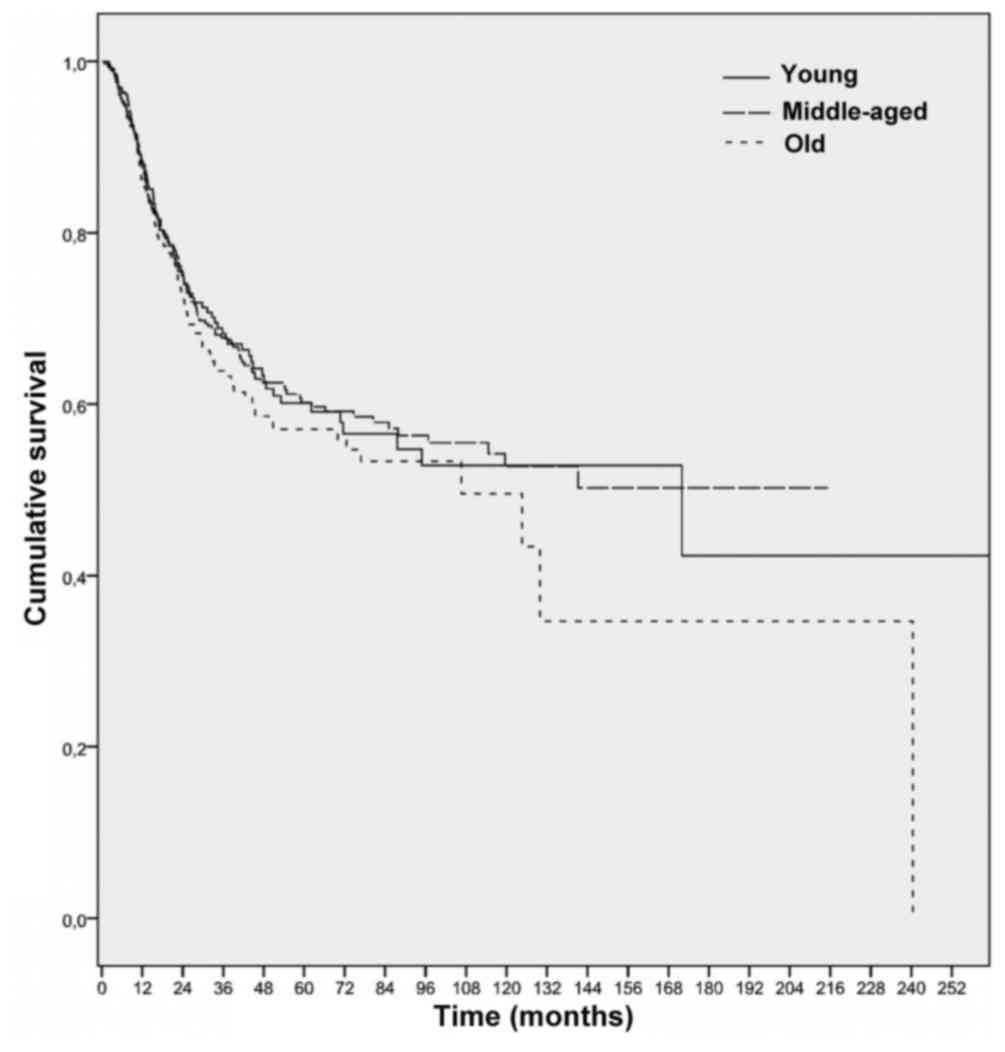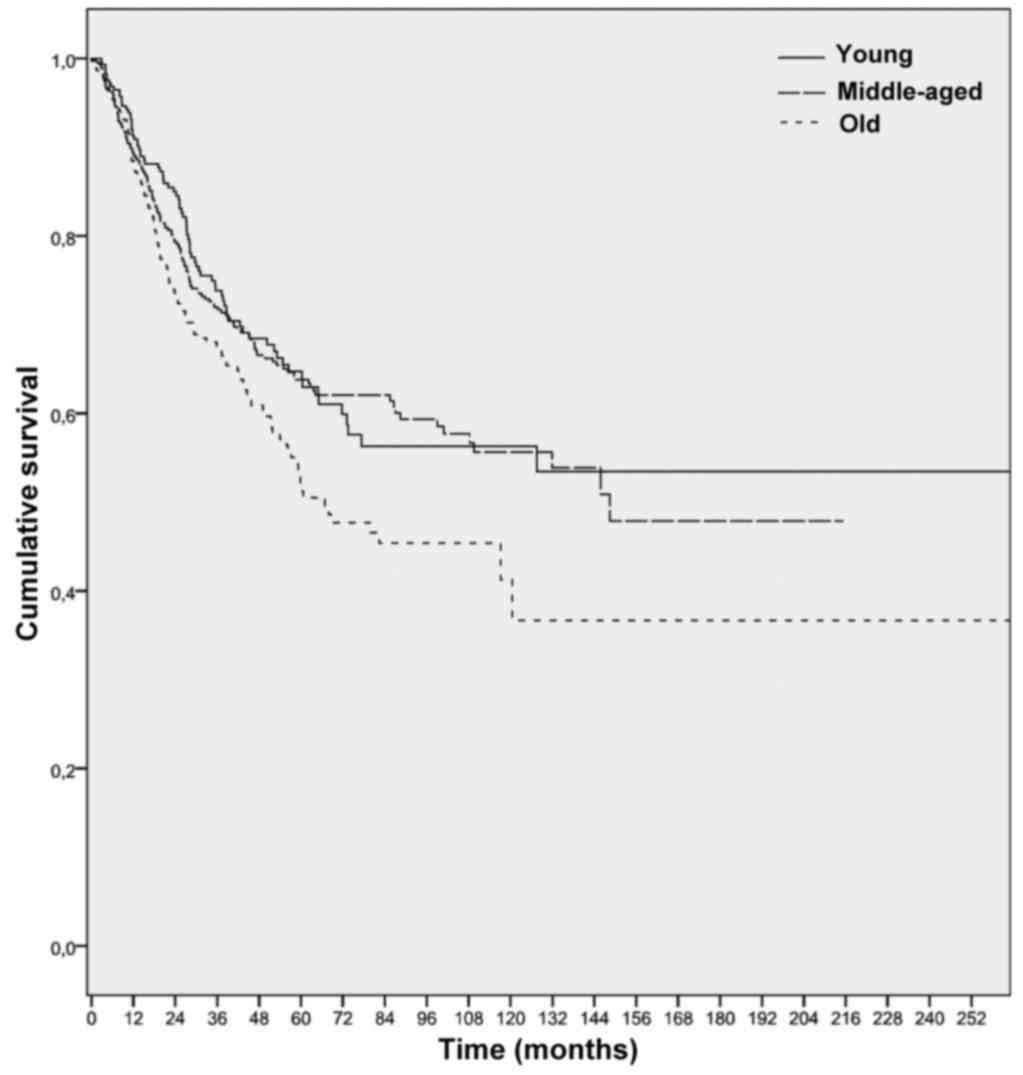Patient age and cutaneous malignant melanoma: Elderly patients are likely to have more aggressive histological features and poorer survival
- Authors:
- Published online on: October 4, 2017 https://doi.org/10.3892/mco.2017.1439
- Pages: 1083-1088
Metrics: Total
Views: 0 (Spandidos Publications: | PMC Statistics: )
Total PDF Downloads: 0 (Spandidos Publications: | PMC Statistics: )
Abstract
Patient age has been reported as a highly significant and strong predictor of the outcome in patients with cutaneous melanoma. The aim of the present study was to determine the clinical significance of patient age in Turkish patients with cutaneous melanoma. A total of 1,169 patients with pathologically proven cutaneous melanoma were enrolled. Age of patients was classified as young (<40 years), middle‑aged (40‑59 years) and old (≥60 years). The median age of the patients was 51 years (range, 16‑104 years). Non‑superficial spreading histology was significantly more observed in old patients than in the other age groups (P<0.001). A lower Clark invasion level was significantly more observed in young patients compared with the other age groups (P=0.013) and higher levels were significantly more observed in older patients compared with the other age groups (P=0.002). Furthermore, the rate of thin Breslow depth was significantly higher in young patients compared with others (P=0.038). Although a lower mitotic rate was observed predominantly in young patients compared with others (P=0.007), ulceration was significantly more present in older patients (P<0.001) and absent in the young patients (P=0.003). Patient age was not significantly associated with relapse‑free survival (P=0.327), whereas a significant correlation was demonstrated for overall survival (OS) (P=0.007). The old patients had poorer survival compared with the other ages (P=0.009 for young patients and P=0.012 for middle‑aged patients). However, patient age did not remain significant for OS in multivariate analysis (P=0.768). In conclusion, although patient age does not have a significant predictive role on nodal involvement, recurrence and metastasis, an age of ≥60 years may be associated with more aggressive histological features and poorer outcome in patients with cutaneous melanoma.











